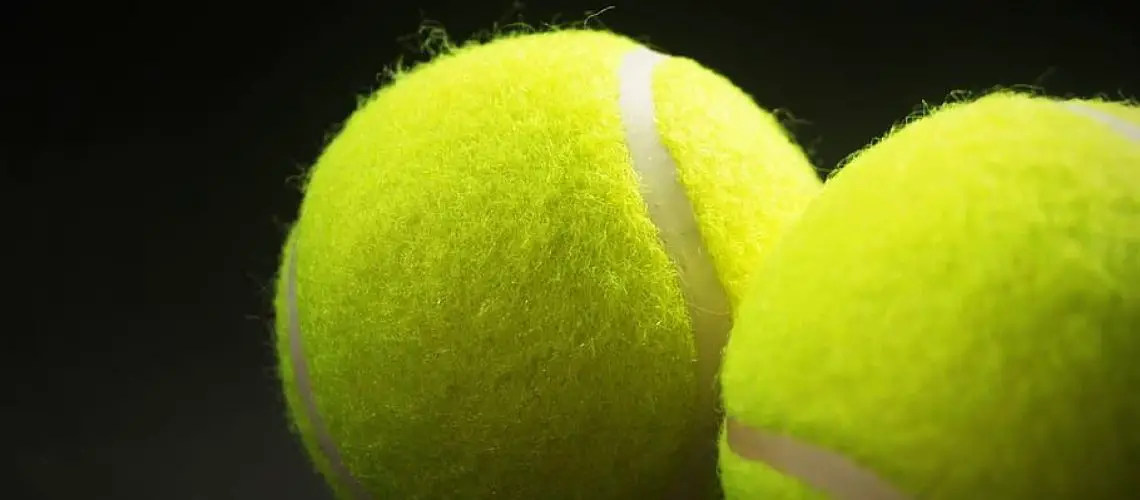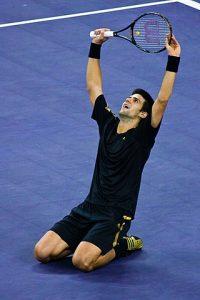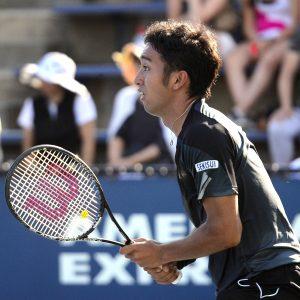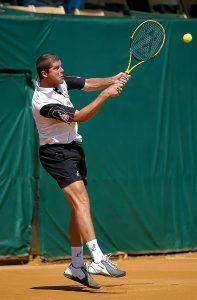We may earn money or products from the companies mentioned in this post.
Introduction to Hawkeye in Tennis

Tennis is a sport known for its precision and fast-paced action In the quest for fair play, technology has played a pivotal role in enhancing the accuracy of line-calling decisions One such revolutionary technology that has made its mark in tennis is Hawkeye Let’s delve into the fascinating world of Hawkeye and understand how it has transformed the game
A Brief History of Hawkeye Technology
Hawkeye technology traces its origins back to cricket, where it was first introduced in 2001 Its ability to track the trajectory of a ball accurately revolutionized decision-making in the sport The success and reliability of this system quickly caught the attention of other sports, including tennis
The adoption of Hawkeye by tennis tournaments and associations was met with great enthusiasm from players, officials, and fans alike It offered an unbiased method of determining whether a ball landed inside or outside the lines, eliminating any room for human error or bias
Purpose of the System
The primary purpose of Hawkeye in tennis is to enhance accuracy in line-calling decisions By utilizing advanced computer vision algorithms and high-speed cameras strategically placed around the court, this technology tracks every movement of the ball with incredible precision
This real-time tracking allows for instant replays and generates highly accurate digital simulations illustrating where exactly the ball landed on the court surface These visualizations provide concrete evidence that aids players, officials, and spectators in understanding whether a shot was in or out
Beyond improving accuracy, Hawkeye also plays a vital role in ensuring fairness in match outcomes Gone are the days when crucial points were lost due to incorrect line calls or disputed decisions that could potentially alter match dynamics dramatically
With Hawkeye’s introduction, players can now challenge line calls within a certain limit, providing them with an opportunity to review controversial decisions This not only adds a layer of excitement and suspense but also reassures players that their fate is not solely in the hands of human judgment
In conclusion, Hawkeye has become an invaluable asset in modern tennis Its ability to enhance accuracy in line-calling decisions and improve fairness in match outcomes has truly transformed the sport As technology continues to advance, we can only imagine what future innovations await us on the tennis courts
Components and Functionality of the Hawkeye System

The Hawkeye system, renowned for its accuracy and precision in sports, relies on a sophisticated combination of hardware components and advanced algorithms Let’s explore the key elements that make up this remarkable technology
Hardware Components
The backbone of the Hawkeye system lies in its high-speed cameras strategically placed around the court These cameras work in unison to capture every moment with exceptional detail and clarity The number and placement of these cameras are carefully optimized to ensure comprehensive coverage of the entire playing area
To deliver precise measurements, these cameras boast impressive specifications such as high resolution and a rapid frame rate This enables them to capture even the fastest movements on the court without missing a beat By leveraging cutting-edge camera technology, Hawkeye ensures unparalleled accuracy in its analysis
Supporting these cameras is a central processing unit (CPU) that serves as the brain behind the operation The CPU plays a crucial role in collecting data from all the cameras during gameplay It then processes this information using complex algorithms to calculate vital parameters like ball trajectory and bounce point
Calibration Process
The calibration process is an essential aspect of maintaining measurement accuracy in the Hawkeye system To ensure reliable results, various methods are employed to fine-tune and calibrate each component meticulously
Frequent calibration checks are performed at regular intervals to verify that all hardware components are functioning optimally By adhering to a strict calibration schedule, any potential inaccuracies or deviations can be promptly identified and rectified
In conclusion, it is through its meticulously designed hardware components and diligent calibration process that the Hawkeye system achieves unmatched accuracy in sports analysis With its high-speed cameras capturing every move on the court and a powerful CPU crunching the data, this technology continues to revolutionize sports by providing precise measurements and enhancing decision-making
Tennis Rules And Regulations Related To Hawkeye Usage

In the fast-paced world of tennis, players are constantly seeking ways to gain an advantage and challenge close calls This is where Hawkeye, the revolutionary technology that uses cameras and complex algorithms to track the trajectory of the ball, comes into play But when can players actually utilize this game-changing tool? Let’s dive into the rules and regulations surrounding Hawkeye usage
When can players use Hawkeye?
1 Challenge rules: Each player is typically allowed a specific number of challenges per set, usually three However, certain conditions may apply for additional challenges depending on tournament guidelines or special circumstances
2 The role of chair umpire: It is crucial for the chair umpire to oversee the proper usage of Hawkeye during a match When a player believes there has been an incorrect call, they can request a challenge from the chair umpire
a) Confirming player’s challenge request: The chair umpire carefully considers the player’s challenge request, taking into account factors such as timing and validity of the claim before granting permission for Hawkeye review
b) Announcing final decision based on Hawkeye result: Once Hawkeye provides its verdict on whether a shot was in or out, it is ultimately up to the chair umpire to announce the final decision based on this technological evidence
Impact on overall game-play experience
Hawkeye has had a profound impact on both players and spectators alike by revolutionizing how disputes are resolved and enhancing fan engagement through visual representation
1 Reducing disputes between players and officials: With Hawkeye’s accurate tracking system, disagreements over line calls have significantly decreased Players can now rely on the technology to provide unbiased and objective decisions, minimizing conflicts and improving sportsmanship on the court
2 Increasing fan engagement through visual representation: One of the most exciting aspects of Hawkeye is its ability to visually display the trajectory of the ball Spectators can now witness replays in real-time, analyzing shots from different angles and gaining a deeper understanding of the game This immersive experience creates a sense of excitement and involvement among tennis fans around the world
In conclusion, Hawkeye has become an invaluable tool in modern tennis, providing players with a fair and accurate means to challenge close calls Its impact on reducing disputes and enhancing fan engagement cannot be overstated As this technology continues to evolve, it will undoubtedly play an even more significant role in shaping the future of this thrilling sport
Controversies And Limitations Of The Hawkeye System In Tennis

The Hawkeye system in tennis has revolutionized the way line calls are made, providing players, officials, and spectators with a more accurate and objective method of determining whether a ball is in or out However, like any technology, it is not without its controversies and limitations Let’s explore some of the key issues surrounding the Hawkeye system
Potential margin for error
1 Statistical uncertainties associated with camera-based measurements:
While the Hawkeye system boasts impressive accuracy levels, there is always a potential margin for error Camera-based measurements rely on algorithms that analyze footage to determine ball trajectory and position However, statistical uncertainties can arise due to factors such as camera angles, frame rates, lens distortion, and calibration errors These uncertainties can impact the precision of the system’s judgments
2 Critics’ arguments against reliance on technology over human judgment:
Some critics argue that relying solely on technology like Hawkeye undermines the importance of human judgment in tennis officiating They believe that subjective decisions made by experienced umpires or line judges add an element of intuition and context to the game that cannot be replicated by machines alone This debate raises questions about striking a balance between technological advancements and preserving traditional aspects of the sport
Technological limitations
- Availability at all levels/venues of tennis events:
- Cost concerns affecting widespread implementation:
One limitation of the Hawkeye system is its availability across all levels and venues of tennis events While major tournaments have been quick to adopt this technology, smaller tournaments or lower-ranked matches may not have access to such advanced systems due to cost constraints or logistical challenges
The implementation of the Hawkeye system requires significant financial investment The cost of installing high-speed cameras, computer systems, and trained personnel can be prohibitive for many tennis organizations This limits the widespread adoption of the technology, thereby denying certain players and fans the benefits it offers
Possible future developments and improvements
- Emerging technologies in sports analytics and officiating:
- Advancements in camera systems, computer processing, and accuracy:
The future holds promise for emerging technologies that could further enhance sports analytics and officiating Artificial intelligence (AI) algorithms, machine learning, and data-driven insights could revolutionize how line calls are made in tennis These advancements may offer even greater accuracy and reliability than what is currently provided by the Hawkeye system
Ongoing technological advancements in camera systems, computer processing power, and accuracy can contribute to improving the Hawkeye system’s performance Higher resolution cameras with increased frame rates can capture ball movement with even greater precision Additionally, improved algorithms can minimize statistical uncertainties associated with camera-based measurements
Useful Links

At the U.S. Open, that voice yelling ‘Out!’ comes from a …
US Open to use Hawk-Eye line-calling technology on all …
Low-cost Tennis Line Call System with Four Webcams
Tennis ‘Hawk-Eye’ technical research
Automated Line Calls Will Replace Human Judges at U.S. …
Hawk Eye – Technology in Tennis
What Is Hawkeye In Tennis? – Helpful Information For You
Hawkeye Tennis & Recreation Complex
Line Referees or Hawk-Eye? – Tennis Column #56
Hawk-Eye Innovations: Home
At the U.S. Open, line judges are out. Automated calls are in
Hawk-Eye at Wimbledon: it’s not as infallible as you think
‘Hawk-Eye is not at all accurate’ – Gilles Simon blasts …
Why Is Hawk-Eye or Electronic Line-Calling System Not …
Video Evidence in Tennis: Hawk-Eye makes it possible
The Real Reason Why The French Open Doesn’t Use An …
Wimbledon Says No To Replacing Line Umpires With …






